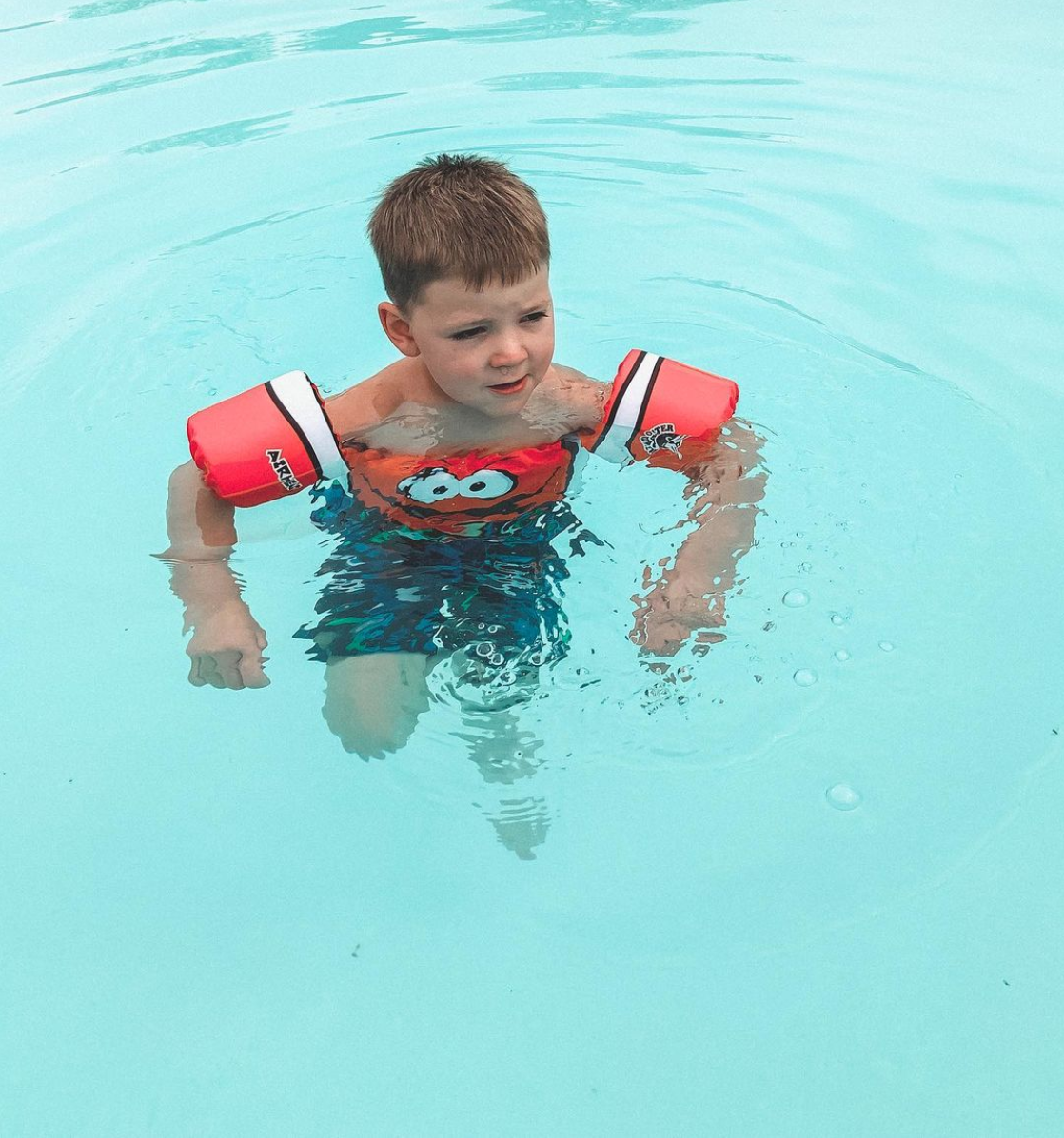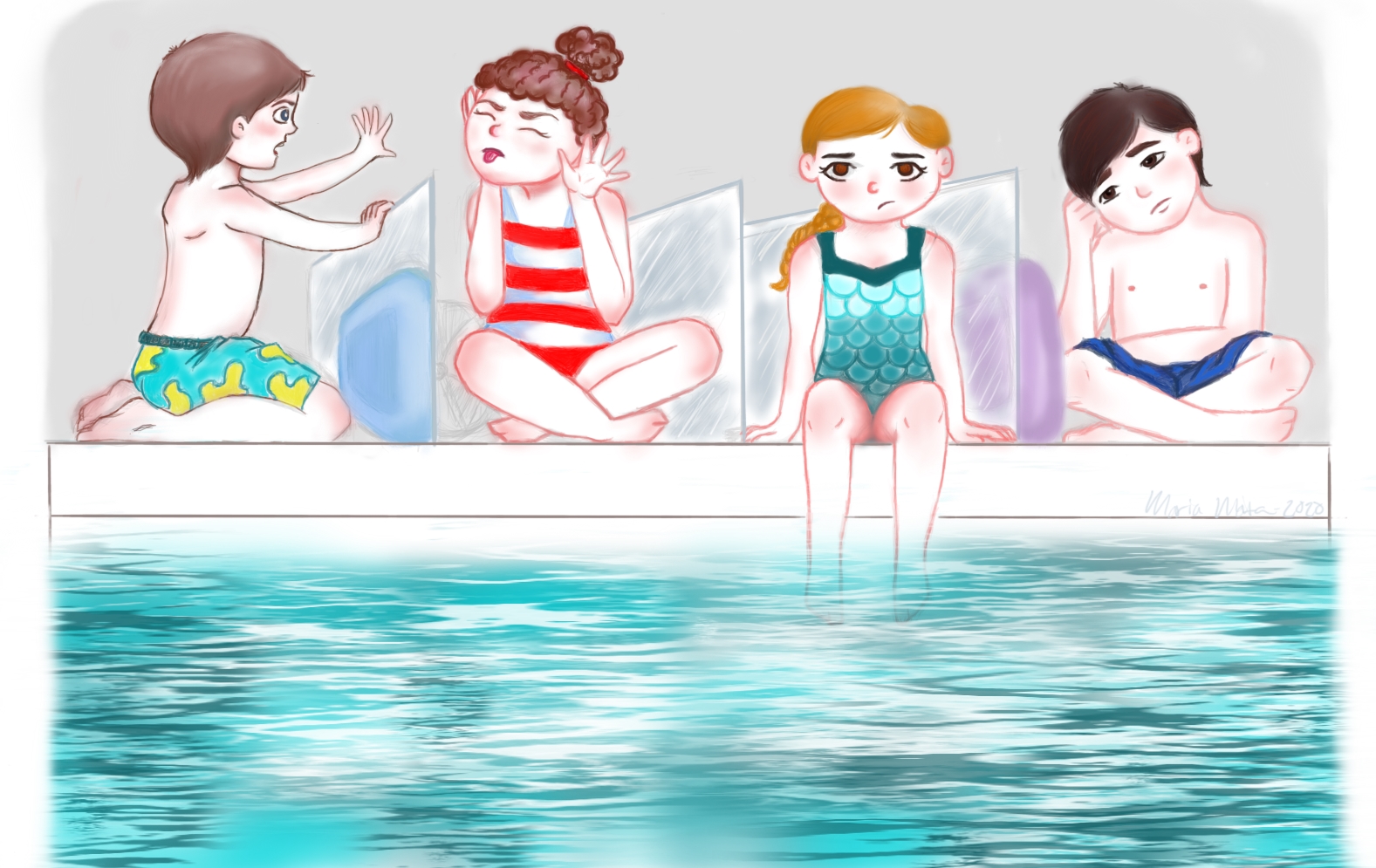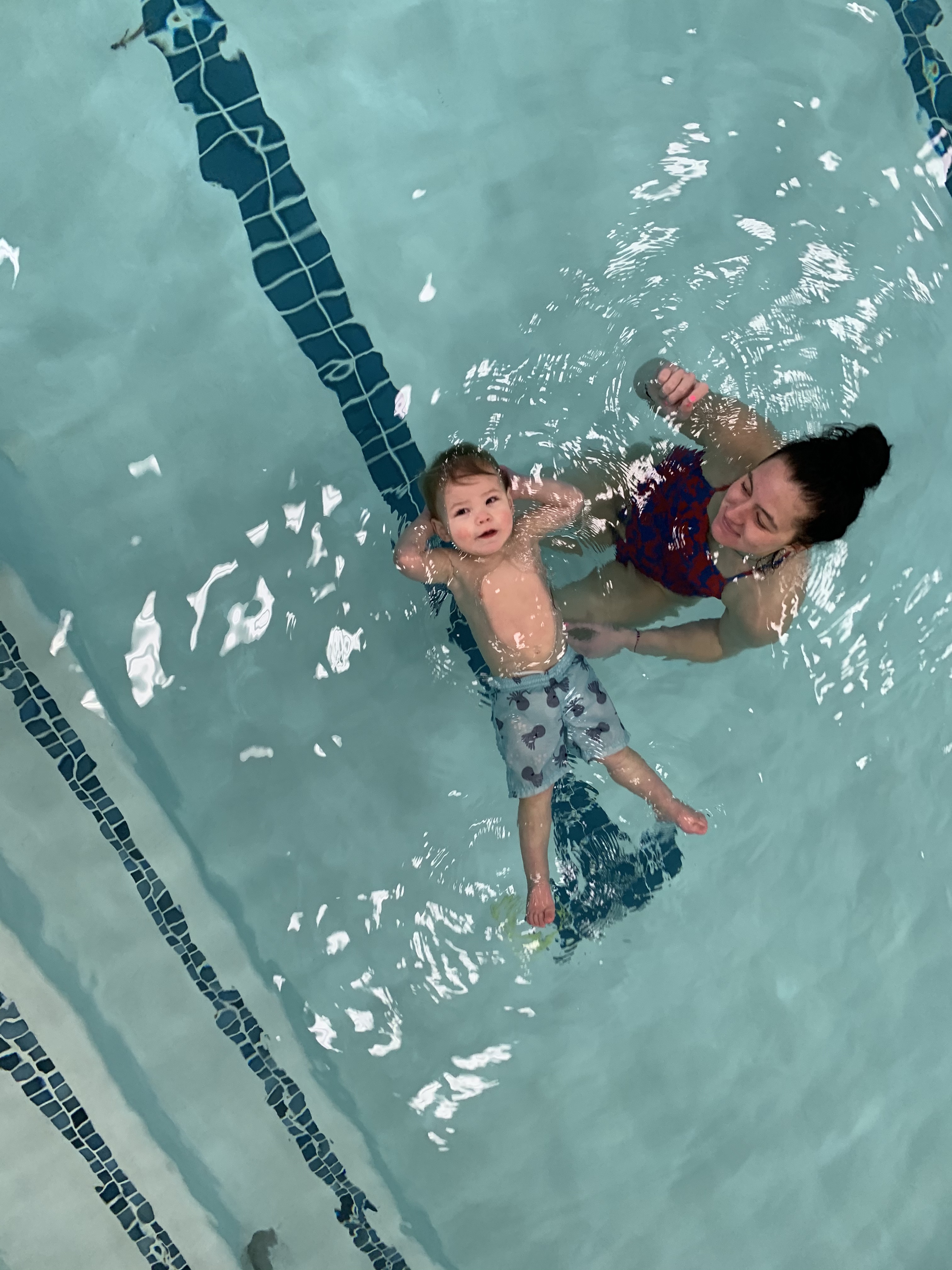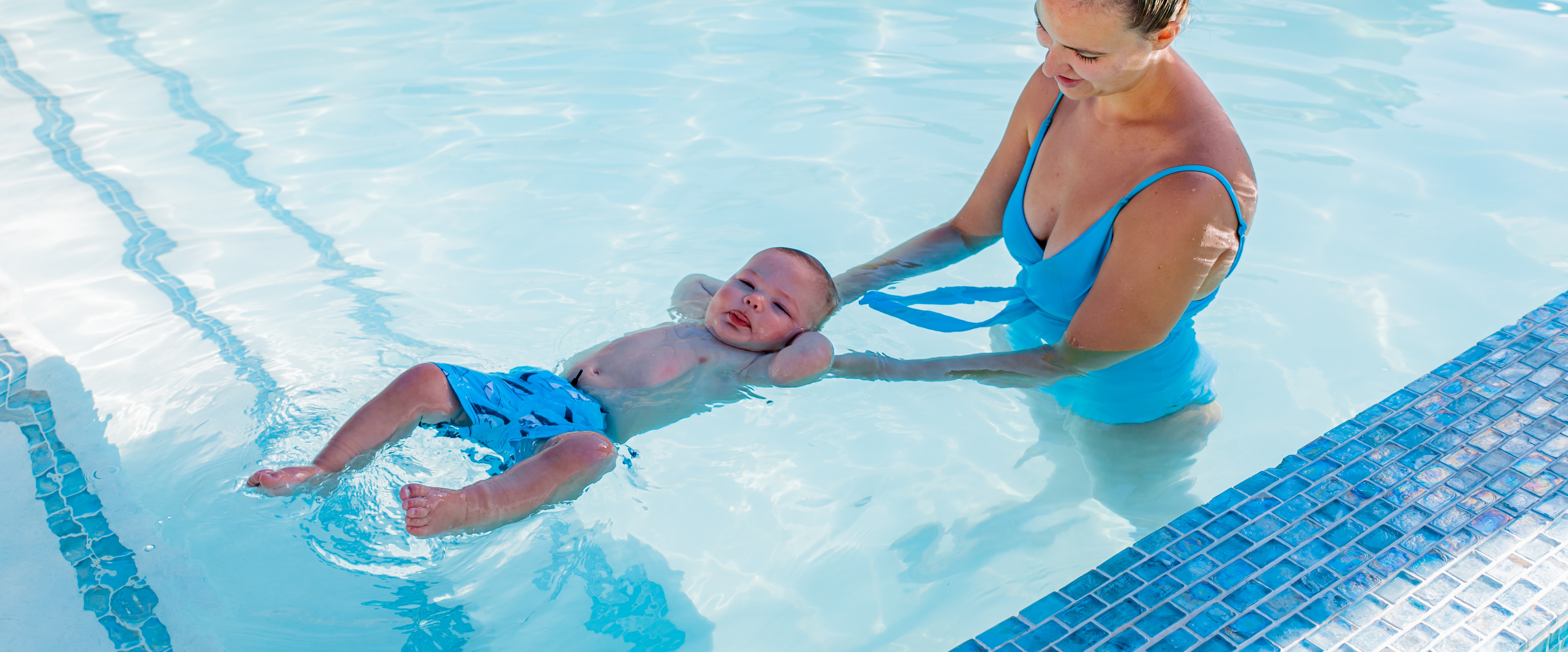Just within the last year or two, my number one question from parents has been about dry and secondary drownings. After their first couple of lessons, most parents will ask me if they should be worried about their child dry drowning after a swimming lesson. Here is what you really need to know:
We have all heard about or read a story that talks about how a child went swimming and then died a few days later, something that is absolutely horrific and now has become every parents' worst nightmare around the water! But in all of these stories or videos we are seeing on our social media pages and on the news, we aren't getting the full story. Have you ever wondered why you hadn't heard of dry drowning when you were a kid? Because it's that rare. Our bodies were not designed to drown ourselves!
I want to walk you through a child's learning process for survival swimming lessons to help clarify a lot of questions we get. When a child, at any age, is first introduced into the water, we teach them how to start holding their breath when they are submerged. To teach this, we start by giving them a cue, like 1..2..3.. then we blow in their face to force them to take a breath in. Once we do that, we bob them under the water in a soft, quick motion. Most of the time, a child will come up and cough, and that's when a parent panics! But to me, their instructor, that is their body telling me that they drank some water and their body is responding exactly like it was supposed to, by coughing, clearing their air way and allowing them to breathe air, not water. Remember, swallowing water is not the same thing as inhaling water. Like I said before, our bodies don't want to drown. So responses like coughing, burping or even throwing up are our bodies' natural and healthy way of making sure that does not happen.
Think of this. If I told you to go under water and take a deep breath, could you do it? No, your brain would tell your body not to. What would probably happen
is you'd get water up your nose and maybe get a big drink of pool water. So does that mean the water is going into your lungs? No. Same logic goes for a child learning to swim. The process typically goes like this: They will swallow some water when first learning to hold their breath. As they build lung capacity and confidence in the water, which I believe can be achieved by consistent
lessons and water time, then they will start holding air for longer periods of time, which will cause the body to burp out excess air. Then, when a child is mature enough to comprehend blowing bubbles, we will have them blow the air out under water, teaching them proper breathing techniques for swimming.
The term “dry drowning” and “secondary drowning” aren’t actually medical terms. But they do point to rare complications that you should know about. With so-called dry drowning, water never reaches the lungs. Instead, breathing in water causes your child's vocal cords to spasm and close up. That shuts off their airways, making it hard to breathe. You would start to notice those signs right away -- it wouldn’t happen out of the blue days later.
“Secondary drowning” is another term people use to describe another drowning complication. This one usually happens after a child has experienced drowning. It happens if water gets into the lungs. There, it can irritate the lungs’ lining and fluid can build up, causing a condition called pulmonary edema. You’d likely notice your child having trouble breathing right away, and it might get worse over the next 24 hours. Both events are very rare. They make up only 1%-2% of all drownings, says pediatrician James Orlowski, MD, of Florida Hospital Tampa.
I got an email from a follower wanting to start swimming lessons for her 1 year old, but had heard from her friend that you should not start swimming lessons until her child was older to avoid dry drowning... I was shocked! That could not be farther from the truth.
Wouldn't you want your child to learn to control their breathing in the water at an early age?
Wouldn't you want them to know how to take a breath before submerging?
Wouldn't you want them to learn, with trained instructors, respect for the water?
Wouldn't you want them to be prepared for a survival situation with someone who knew exactly how to help them, and how to teach them in a calm and controlled environment?
Drowning, of any kind, continues to be the second leading cause of accidental death in children, second to car accidents. If saving your child from any kind of drowning experience was as simple as buckling a seat belt, would you do it?
As parents, we can't cringe every time our children cough at the pool. Remember, learning any skill takes time, consistent practice and it comes with its own challenges. Luckily, survival swimming has evolved from the days of our parents throwing us into water and forcing a fight or flight instinct. If you want to give your child a real fighting chance when it comes to water safety, get them in the pool! Get them into swimming lessons! We only have seconds to prevent drowning and in those moments your child will either know what to do or they won't. You won't always be there, you can't always be there. Prepare them. It’s something you won't ever regret. And I promise you, swimming lessons will always be cheaper than a funeral.
Frequently asked questions
"How to prevent, warning signs, who is at risk"
The best way to prevent your child from experiencing any classification of drowning would be to put them into survival style swimming lessons. Not all swimming lessons are the same, the industry is basically split into two groups: Survival swimming and Comfortability Swimming. One will teach your child to save themselves in the water and the other will introduce them to water in a fun, playful environment, in this setting they usually need years of lessons before they will be strong enough to truly save themselves.
Warning signs: Immediate trouble breathing, Spasming of the vocal cords, Coughing, Chest pains, Extreme tiredness, Irritability, Drop in energy levels.
Any one can be at risk, just as anyone could be at risk for drowning. Your best chance is getting your child comfortable in the water at an early age, I had both of my boys in the water at 2 weeks old.
"I would love to know how these kiddos are not at a higher risk for dry drowning. It seems they swallow a lot of water."
Swallowing water and inhaling water are very different. Swallowing water happens very often in swimming lessons because a child is learning a new skill, and practice makes perfect. The only way to build lung capacity and learn how to hold your breath when you're submerged is by going under the water. So when they swallow water, the body either passes it through urination or throwing up. Swallowing water goes to the stomach, inhaling water (very hard to do) goes to the lungs. Simply put, throwing up is the bodies natural reaction.
PS if you fed your child within an hour of lessons they will probably throw up, swimming on a full stomach is miserable no matter your age.
"It’s my understanding that my baby (4 months) will hold his breath if I blow in his face and dunk him. But what if he were to just fall in a body of water? Would he have the instinct to hold his breath or while under water would he inhale a bunch of water?"
Blowing in a child's face is the very first step to teach them to hold their breath, over time we take the blow away and use the cue to help them know when to hold their breath and gradually increase the length of the breath and time under the water, so with more practice they can ready themselves to be submerged. With no lessons it's hard to say how long they could hold their breath. Falling into water with out practicing that motion in a controlled setting, like swimming lessons, wouldn't allow for a large breathe. A child would drown and in that situation, mouth to mouth would need to be performed and then a medical professional would watch for signs of "secondary drowning."



